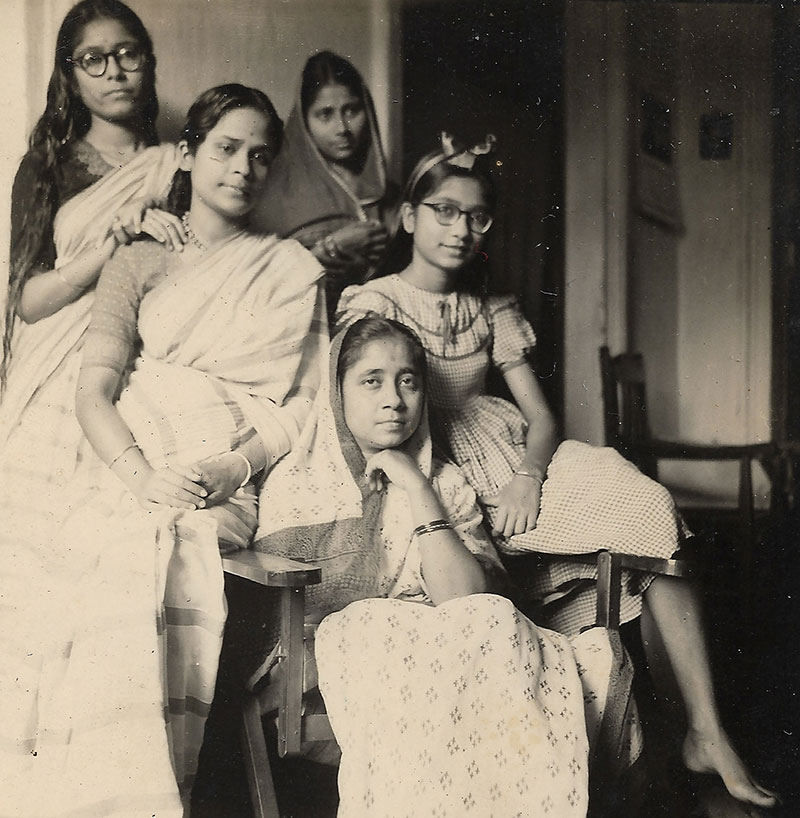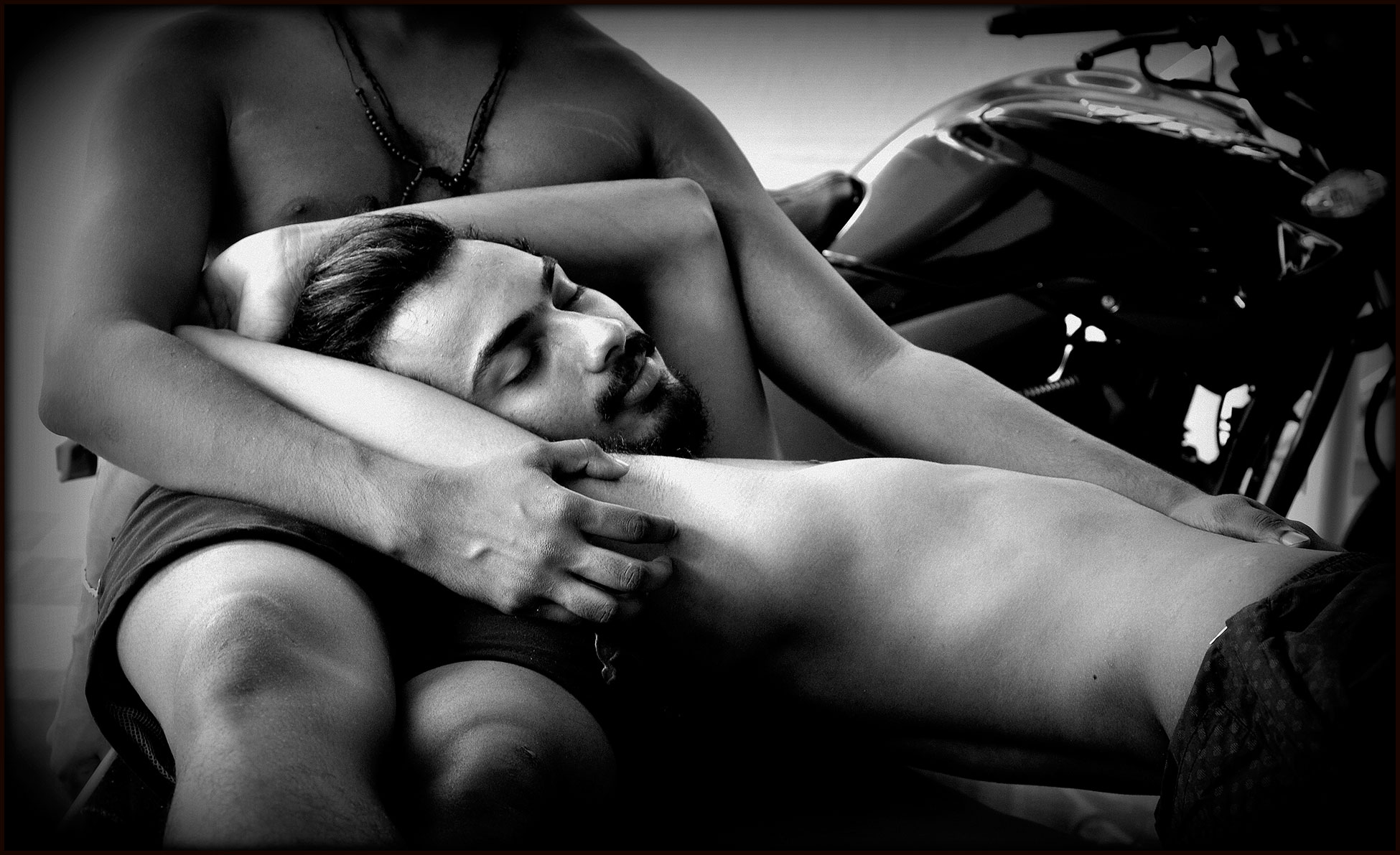Focus
Ideas and Thoughts
Photo Mail focuses on
Contemporary photography
Practitioners, their works, and
Its aesthetics
In the broader context of
Photographic theory and
Philosophy
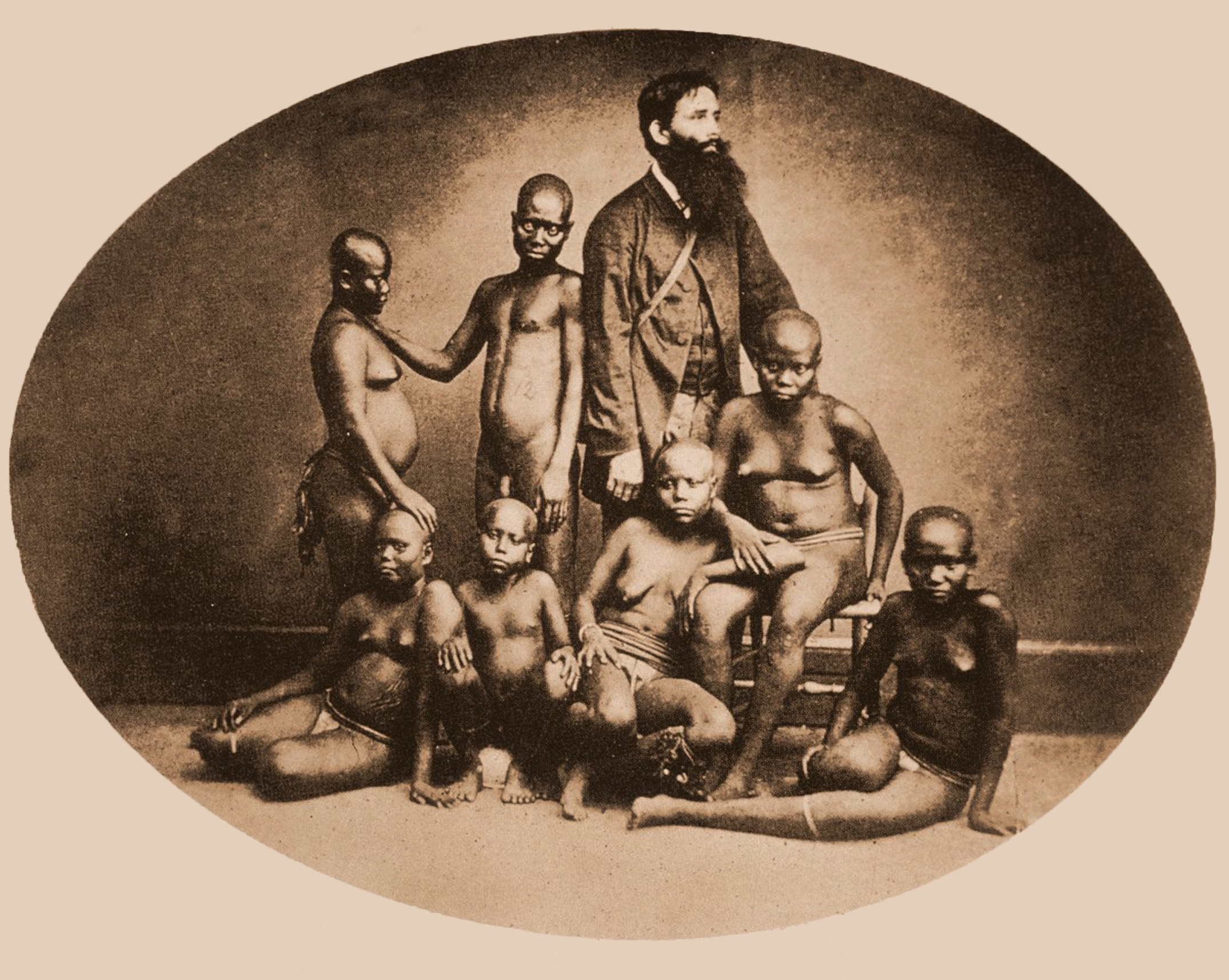
Satish Sharma collection
Maya is the illusion of mistaking our relative perceptive for reality – of confusing the map with the territory.
– Fritjof Capra
The camera dominates our drishti. Photography in its different avtars – as cinema, television and the virtual, visual feeds of the worldwide web – has become our main form of perception- of the world and of our selves. It is the ultimate maya machine that is creating a hyper reality where images are more powerful than ‘reality’ they represent.
I see Photography as a Mapping and as a new and powerful, very male, Mahamaya – the Great Illusion- and it is this that I want to explore. Look at the illusion of photography’s realist discourse of ‘photographic truth’ and its power to create and control our perception of the world around us. Its power to control our minds by creating a mechanistic, masculine and patriarchal reality that is just the opposite of our world view of a female Prakriti, which is seen as a constantly changing, pluralistic and cyclic, reality.
Maya has been seen and talked about as the mysterious power by which God controls the universe. Maya, though is not just ‘illusion’ or ‘a veil that obscures reality’. Maya also means ‘delusion’. Avidya was the word used in the Upanishads before maya – as an equivalent.
Being rooted in the phenomenal world of a contemporary society that is seen and shown as a media generated spectacles is, I believe, rooting oneself in avidya, especially if the look, the gaze and the larger picture surrounding us are the products of the singular, monocular vision of the camera.
Photography’s invention in the middle of the 19th century shifted culture from Shruti and the Biblical Word–that-first-was to Image. It concretised the process of privileging the eyes over all other senses and today constructs our world as a vast visual landscape –an ‘information landscape’ that is saturated with photographic images. Images that bypass barriers of language and culture, both spoken and visual, as no other images can or ever did. Ours is a world that is constructed by photographs and controlled by them. Photographic Images that manufacture and mediate our social relationships and political realities.
VIDYA OR SAMYAG DRISTI. THE RIGHT VIEW
Dristi or perception is thought to be incomplete, immediate knowledge. It is the buddhi, the intellect, that is supposed to be the major means of perception. When it is aided by the mind and the ego it is supposed to reflect the consciousness of a purush like a mirror reflects an image.
Photography has been called ‘the mirror with a memory’. I speak, I hope, as a conscious purush with a bit of budhi.
I am a documentary photographer who now sees the camera as a creator of fiction – the fiction and the fantasy that dominates our objective and subjective perspectives of the world. I don’t see photography as a window on the world giving us an objective look at the reality outside. Or even as a mirror, reflecting only my navel gazing subjectivity.
I no longer believe there is such a thing as a pure documentary photography. That photographs are purveyors of Truth. The act of picture making I know, is never neutral . Was never neutral – not even in any ‘I am a camera’ or ‘fly on the wall’ approach.
It was certainly not neutral in the colonial documentation of the world. A documentation that was about the creating of the lesser ‘other’ and about making/justifying the power of the West over the to-be-ruled-over Rest.
This was the ‘documentation’ that we internalized as colonial subjects and continue to subscribe to even today. As a character in Salman Rushdie’s ‘Satanic Verses’ put it. “They describe us, that’s all. They have the power of description. And we succumb to the pictures they construct”.
Most self perceptions are all too dependent on perceptions of others. How others see you, know and show you and how you see others. I am – to me and to the world – a Hindu. But that word exists only because of a mistake. An absence actually. The absence of an ‘S’ in Old Persian. Persian that replaced the S with an H and made the people around and beyond the Sindhu river Hindus – forever.
Colonial, documentations were not mistakes. As texts, studies and photographic surveys they consciously defined distinctiveness and exaggerated differences. They created the lesser ‘Others’ that we internalized to make our own Identities. Our ‘Selves’. As lesser others.
I succumbed to that idea of documentary photography, too. But now I know that Photographs are influenced by simple things like the way we stand, how tall we are. Whether we bend or refuse to bend. . Our ethnicity and colour. Our religion, our caste . Our gender. Our fears and prejudices. Our like and dislikes. Our loves and hates. Most certainly by our political convictions and commercial interests.
I see Photographic representation as a highly politcised cultural mapping of the world. A mapping that had its roots in colonialism but continues to grow exponentially in these ‘New World Order’ days of a new ‘empire’ that seeks not lands but a controlling hegemony over the worlds’ cultural and social life as the soft power that will enable it to make the 21st century an American Century.
What is sought is “full spectrum domination”. “Domination that will not allow any challenges. Economic, military or cultural “Domination that seek control of all international commons – including Space and Cyberspace – culture not excluded”.
Our Cultural Perceptions are sought to be constructed to serve American interests.
The fourth generation Warfare that we are in the middle of , sees “the whole of an enemy’s society as a battlefield. – where action will occur concurrently thoroughout all participants’ depth including their society as a cultural and not just as a physical entity”.
The post 9/11 American return to UNESCO has to be understood in terms of the need to control cultural discourse and spaces.
Drshti, then, has to be seen in relationship to our new world’s increasingly globalised cultural and political power relationships. And in relationship to their preoccupations with the creation and control of knowledge as power.
These Knowledge and control systems rely on increasing control over Perception through strategies blatantly described as “Perception Management” . Strategies designed to give us “Maximum images and minimum insight”. Strategies that openly talk of government departments for deception, misinformation, disinformation, media manipulation, spin doctoring and information warfare. Strategies that are designed by media management companies run by ‘information warriors’ deliberately placing a deceptive veil on the world. A mass media mediated Maha Maya that is sold as reality through camera generated images.
Photography is a way of seeing. A way of controlling what others see. It is a technological and mechanized form of perception. It is an act of representation. A perceptual practice that begins in ancient city state systems as a cartographic surveying of lands and today amplifies vision by exaggerating and carrying it across the world at incredible, near instantaneous, speeds. And this instantaneity of contemporary communication has concretized perception into a succession of split second visuals. Visuals that seem to say so little in real terms. Yet control so much of our minds.
Photographs are the bricks that construct our social and political landscape. They construct us and our perceptions more than bricks ever did. Especially in these days when there are many more photographs in the world than there are bricks – with many many more being added in the last few years of digital photography than were shot in the whole history of film based photography.
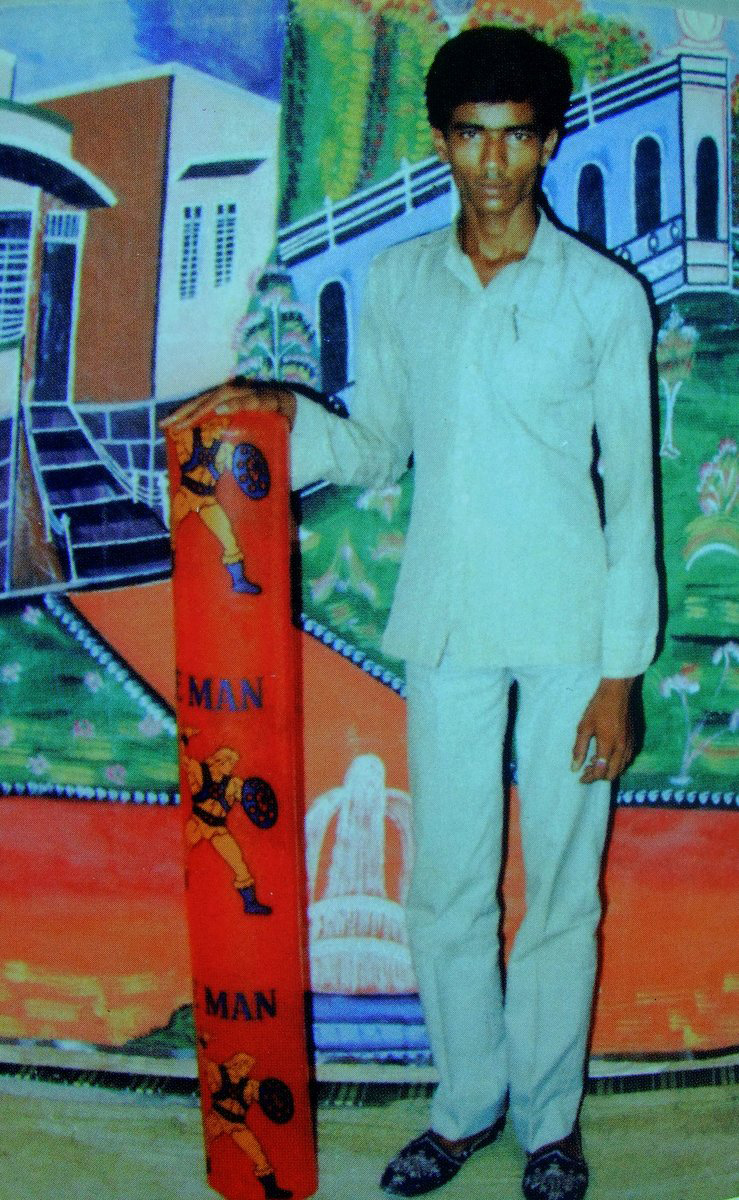
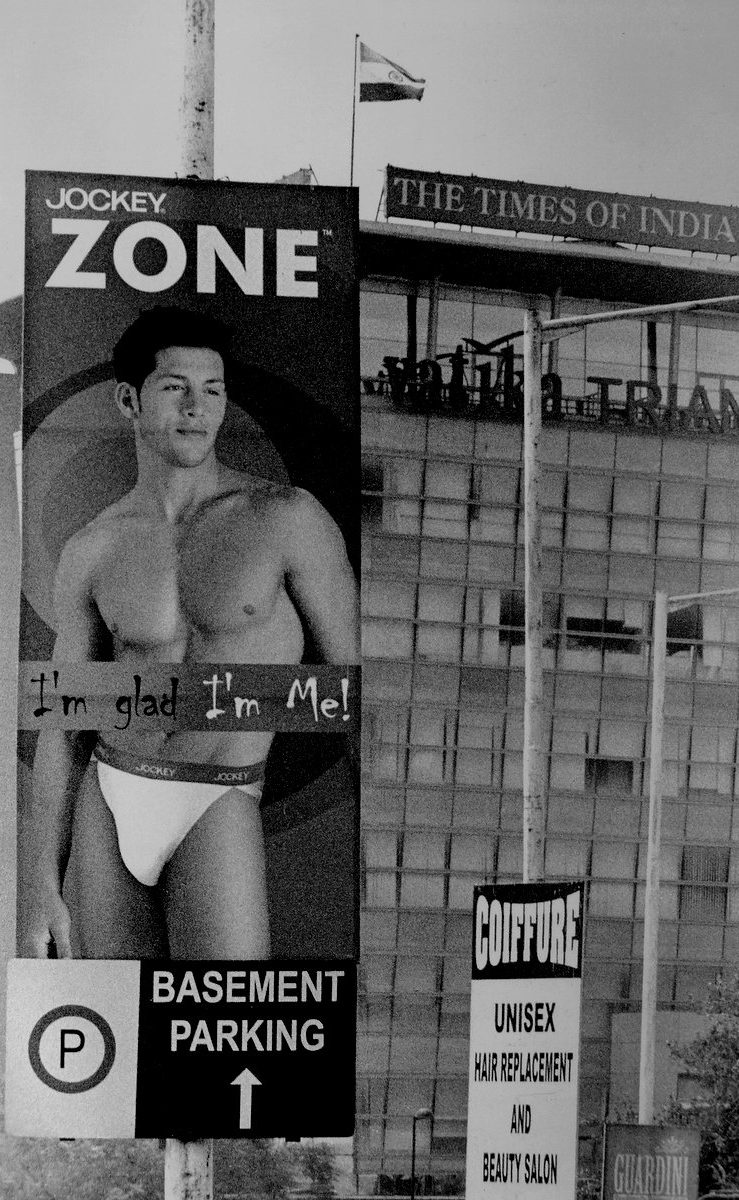
Image 1: Satish Sharma collection | Image 2 © Satish Sharma
ENLIGHTENMENT
‘Photo Graphy’ is Latin for’ writing with light’. A process of drawing with light in an act of ‘enlightenment’ in a camera obscura – a dark room. I like to connect this to the European idea of Enlightenment which was also seen to be bringing light into the dark corners of the world- as the great European Civilizing Mission..
The concept of a godlike Enlightenment promised to give the world modernity and progress in the form of Reason, an objective and superior science, universal human rights, democracy, morality and a superior humanistic Law. And an autonomous Art, cut off from its religious roots and cultural connections, as a matter of just better taste and style. A purer art for art’s sake. Art.
All seen and sold as the products of a progressive, Western Mind. A mind that ignored the fact that the roots of these ideas and its own progress lay in some of the lands they were trying to ‘civilize’.
If what was promised was Progress with superior ‘human’ laws and Democracy what we were given was colonialism.. Colonialism that used the idea of ‘progress’ and ‘modernity’ to obtain from us, the colonized, our consent to be ruled. We were seen and defined as the lesser “other’ in need of and asking for, ‘civilization’. A Modernism that successfully hollowed out our cultures even as it haloed its own forms.
Photography was a major player in the Colonial Project. A project which used the credibility and veracity of the photographic image -its realism – to create and sell the idea of the white mans’ civilise-the-world burden.
Realism was a weapon for the colonial powers who used it to produce their version of the reality of the lesser ‘Other’. An ‘Other’ constructed and fabricated to substantiate a superior ‘self’.
The Orient was seen/shown as underdeveloped world, not able to represent itself . It had to be represented and shown as a homogeneous anonymous mass. Not populated by individuals or sometimes even humans.
The realist discourse of photography believes that photographs capture the world as it is. As scientific, empirical knowledge. It is the Camera’s mechanical nature, which is supposed to give us the unchallenged, unassailable ‘reality’ of photography. It presents us with the image of photography as a mechanized form of perception. The idea of Photography as mechanical reproduction that forms the image of the world without the intervention of human creativity is supposed to present us with a world ‘drawn by its own pencil’ – The Pencil of Nature. A Pencil that cannot have personal biases and political agendas.
The camera then, is thought to reveal not just the essence – the rasa of the objects it depicts but the reality of what it ‘captures’ shoots, snaps and shows.
Reality and image, though, are separate and only combined by the mind. It is the mind that through interpretation and analysis moves indeterminate perception, a surface glance, into determinate knowledge.
And it is the light bouncing off a surface that makes a photograph. Photographs, then, are indeterminate inscriptions, delusionary descriptions of surfaces. Avidya? Maya!
Shankara , I read, holds phenomenal existence as beyond description for it is neither real not unreal.
The collapse of the Berlin wall marked, as Francis Fukoyama put it, ‘The End of History”. The end of any multiple truths, multiple histories, multiple economies and pluralistic points of view. It marked the beginning of a Super power point of view of the world. One super power. One world image -the official American one. A Super Power point of view of the world that has brought us a system intent on fabricating and pushing pseudo realities. Manufactured, mediated realities that are’ constructed not reflected by the ‘mirror with a memory” or mechanically manufactured and revealed reality.
Photography these days is formed/informed by the manipulative methods of those in power. Realism is a weapon of control for powers elites pushing their version of reality.
Governments and media corporations are run by ‘information warriors’, spin doctors and perception managers like the Republican pollster Frank Luntz who realize the value of photography. “Americans like a good picture, he said before the beginning of the Gulf war,” and one photograph of an Iraqi child kissing an American soldier is more powerful than two months of debate on the floor of Congress”.
Photography around the world is considered to be an American Art form and the America we know is built by photography. The US is a nation made by its Hollywood movies and T V industry. Media that have taught the world to prefer pictures to facts. From a society that saw photography as a social catalyst for change a la Jacob Riis & Lewis Hine, it has become a nation that now sees it as a system of fabricating pseudo realities. Especially after 9/11.
Sept 11, 2001 was about the creation of a instant history. A collective history that filled the world with unforgettable, iconic images that successfully sold us a simplistic world view Them and Us. Of Good against Evil.
Photographs capture and make memories. Memories which easily become material hard to deny history in individual/collective thought which feeds notions of identity. As a desired and imagined self.
Advertising as avidya.
AVIDYA CREATES DESIRE, FEEDS EGO, ENGENDERS A FALSE SENSE OF SEPARATENESS FROM OTHER BEINGS AND THINGS.
Mass advertising has become a site of representational politics.
Advertising is a cultural mapping. It creates a cultural landscape of needs and desires. It constructs identity- the I as a conscious consumer. Looking for social standing . status. Consumerism is seen as liberation. Creation of a culture of distraction that captivates audiences by distracting from reality. Creating a reality that will shape lives . replace resistance with complacency.
Realism lies at the heart of propaganda and Advertising.
Like propaganda is the art of wrapping the truth in imagination . it is a seduction. A two dimensional reality- manufactured consumer reality that again relies on the reality of the camera image.
Creating informational economies with fluid boundaries of domination.
Thru strategies that alienate, anonymize people – atomizing society by creating pseudo selves in pseudo communities.
Image as tool of persuasion. media constructed pictures in their heads contribute to their understanding of reality. A Mediated Manufactured reality.
Globalised advertising Images have invaded all our spaces. Our public spaces and even our architecture seems to exist as supports for them… culture has been reconsitituted by commerce – as commerce.
We want to be individuals but don’t question the world of Advertising when what is called for is independent thinking. Exploration, invention.
An oppositional post modernism of resistance, reaction, counter interference. a critique of official representations.
Alternative uses of photography. a recovery of other histories of photography.
Creating and preserving an anti archive.
“By reducing all social issues to matters of perception , it is on the perceptual level that social issues are addressed instead of social change there is image change” – Stuart Ewen.
We need a Seeing that is not paternalistic and does not pre-empt others rights/fights to scrutinize protect recall, forget or EXPLOIT THEIR OWN PAST AS THEY THEMSELVES SEE FIT.
Perception that is deep intuitive knowledge, wisdom that is not personal wisdom but wisdom that belongs to the universe. A higher, extraordinary yogic knowledge of yogic intuition that apprehends reality as it is –in its fullness, harmony. And is brought about through psychic means by the transcending of mind processes and perception of subtle thus ness of an object.
What would a documentary photographer have to do with all these esoteric ideas from the past. ——– you may wonder.
I did too until I read about Zen. Its connection to archery for example. About zens roots in dhyan. And realized in practice that photography is a medium particularly suited to such an exploration.
One can control every element in a picture. Arrange what is before the camera and compose what is in the frames very carefully and find that the pictures may become great illustrations for the advertising world or even pictorially perfect that follow all the rules about horizons on thirds etc. but find that they lack a certain magic. The magic of a moment that seems to present itself. Reveals a world that is beyond the limits of a conscious controlling mind.
EXISTENTIAL REALITY OF SUFFERING IS THE STARTING POINT OF THE SEARCH FOR KNOWLEDGE. KNOWLEDGE INDEXED TO SALVATION.
THE KNOWLEDGE INDUSTRY IS CREATING INFORMATIONAL ECONOMIES WITH COMPLETELY FLUID BOUNDARIES OF DOMINATION.
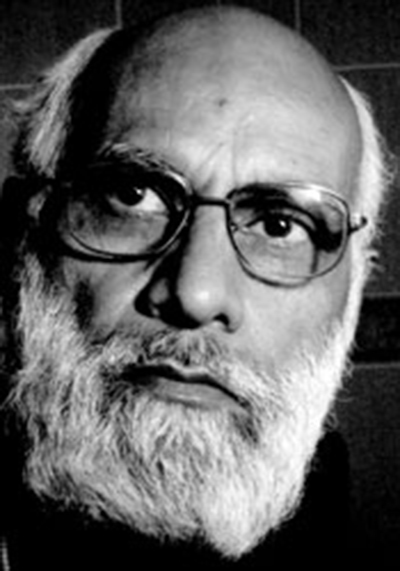
Satish Sharma is an independent photographer, writer, cultural critic, and curator who has published and exhibited internationally. He has worked as a freelance photojournalist for leading Indian magazines and newspapers since 1975 and as a documentary photographer for major international institutions like UNICEF.
Published on August 27, 2017
Share
Related Articles

In my taxi, when a photo artist becomes a cab driver
What motivated Weideman to keep photographing? The answer to this is also an important quality that makes his photographs intriguing. He continued shooting even though he was not exhibiting nor getting into any sort of limelight until the mid-90s. Passion for the medium, of course. But there is more.
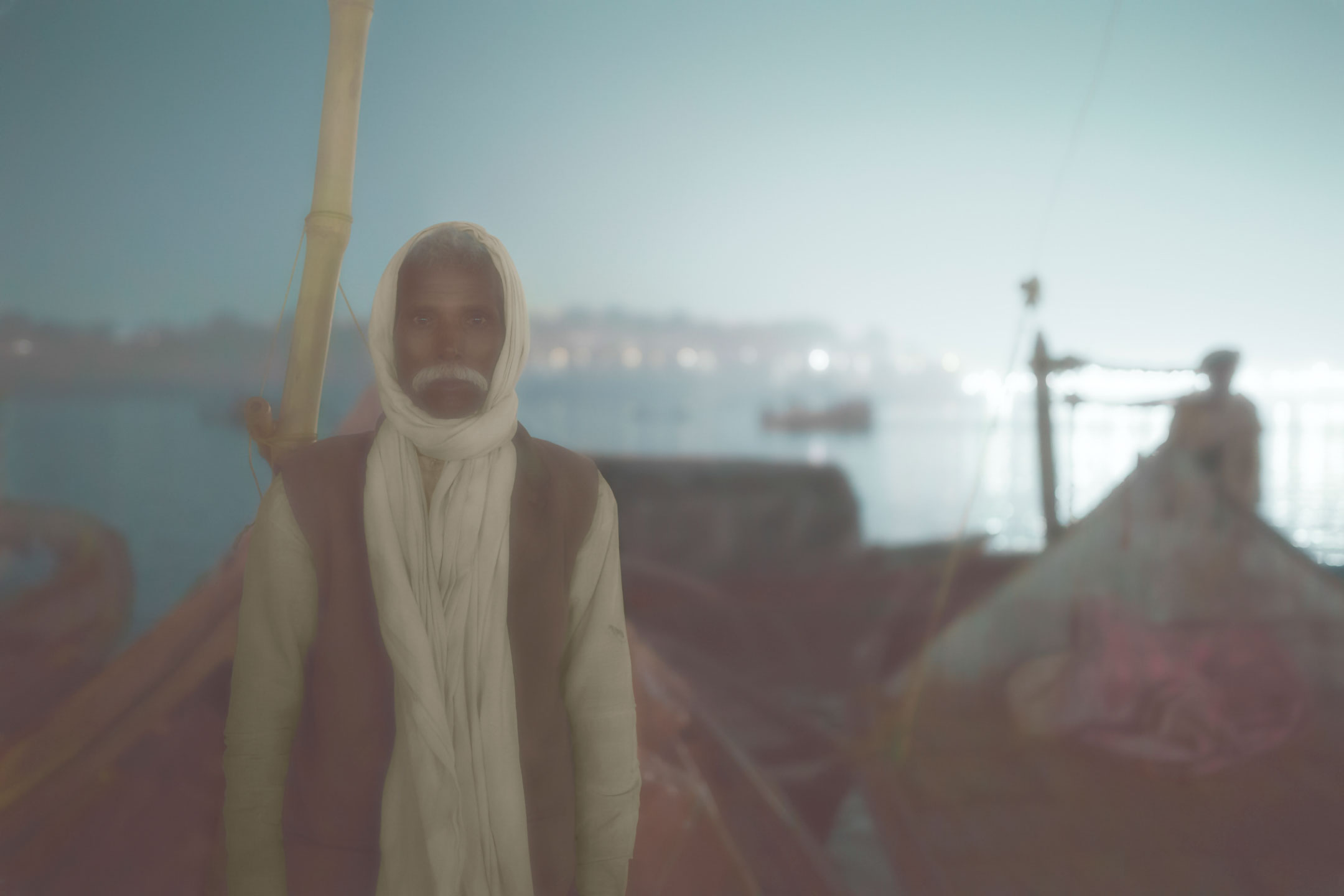
Mallaahs, the boatmen of Gangetic geography, A Photo Art series by Shibu Arakkal
Review of Mallahs, the boat of Gangetic geography, photographic series of Shibu Arakkal. For several hundred years these boatmen on the Ganga and the Yamuna have handed down their oars from father to son. I was intensely drawn to the purpose of their lives, to carry people back and forth on these rivers. Almost married to their boats, these men. To live almost all of their lives on these wooden vessels, going about their worldly chores and belonging to a tribe of menfolk, they pride themselves on being the real caretakers of these mystical rivers. Almost as if they are born on these boats and just as possibly may breath their last on it, the Mallaah men live lives removed from their families and children.
In search of the lost home
Across the world there are ongoing attempts to construct a ‘people’s history’ through photographs. Memory Projects, they are fondly called, focus mainly on the pre-digital era when photography was not as common as today. Bengali photographer Anandarup Goswami’s photography series ‘A Home of No Return’, though not directly linked with any memory project, shows certain resemblances with the latter’s style, and yet carries its own soul. A Home of No Return visually narrates the past and the present through a mixture of faded and fresh photographs.
Homomorphism II
The LGBTQ community has found for itself public spaces in urban regions. We will wait and see what they want to tell the world from that space. After all, solidarity with the cause does not mean solidarity with the acts, and it is time for the community to begin to act convincingly. This exhibition is a good starting point, and further on, there is a desperate need for clarity on the part of the activist-artists.

Elements and Fragments, Uncovering Narratives of a Temple Town
Inasmuch, every photographer that ever visited Tiruvannamalai never took notice about anything other than Ramana and the Annamalaiyar temple – their eyes glossing over everything else and their focus devoted entirely to the two ‘divine’ icons. But, there remains a Tiruvannamalai beyond, which has gone unnoticed and undocumented – invisible to the colonial gaze that is pre-occupied with its exotic fairy tales, and underwhelming for the photojournalist due to its perceived mundane-ness.


